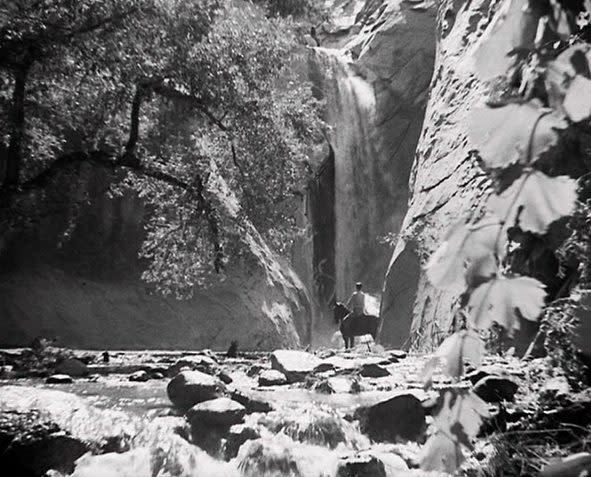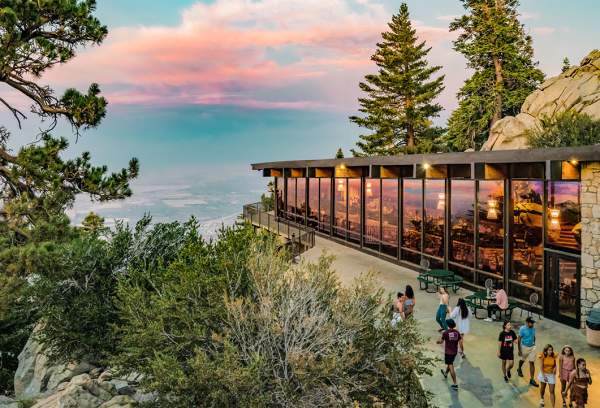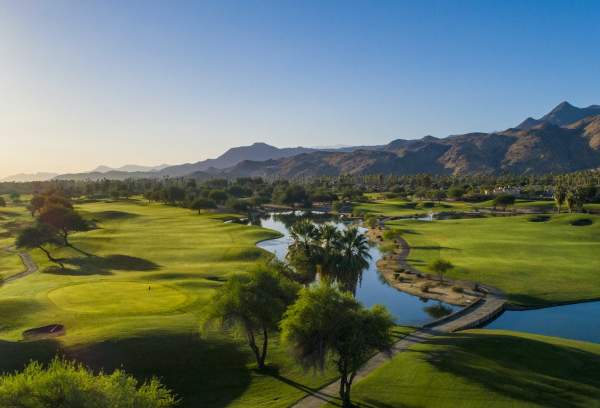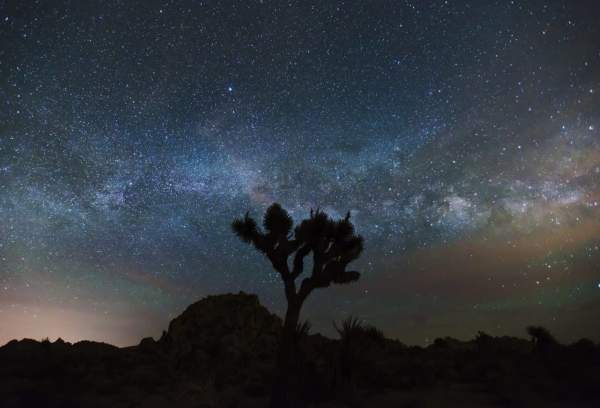Looking at the San Jacinto Mountains, you wouldn’t think water streams were tumbling over rocks and spilling into waterfalls across Palm, Andreas, Tahquitz, Murray, and Chino canyons. But the water does flow as it has for thousands of years, and we have access to see and experience this local beauty of nature.
The rainfall mixes with snowmelt from nearby peaks and trickles through a web of tiny tributaries, which eventually merge into larger streams. They eventually course through the narrow Palm Springs Canyons and create fertile oases in an otherwise dry terrain.
Early Agua Caliente Indians
Early Agua Caliente people lived in the canyons and built small villages along the streams during the hot months. They relied heavily on Creekside resources such as mesquite beans, which they ground and ate as cooked cakes. Granite boulders dotted with deep and shallow mortars and flat rocks used as food prep areas remain in Andreas, Palm, and Tahquitz canyons. They serve as signposts to the Tribe’s rich history in the Palm Springs area.

The Agua Caliente Indians later developed an intricate system to harness water from the streams that flowed through the canyons to sustain their crops and villages. A Cahuilla dam and reservoir near Andreas Canyon still exists, and remnants of rock-lined irrigation ditches that once carried water from Andreas, Chino, and Tahquitz canyons are visible in undeveloped areas of Palm Springs.
Visiting the Canyon Falls
The best time to visit the Palm Springs waterfalls is March and April, simply because this is when the streams are usually at their highest levels. If there was a good snowpack during the winter, the snow melts and combines with February rains to run into the creeks.
Pack a lunch and enjoy watching polliwogs and frogs that dart in and out of the creeks. Patient birders will delight in the variety of winged creatures – from verdins, wrens, and sparrows to owls, hawks, and ravens.

Palm Canyon – West Fork Falls
Palm Canyon is part of Indian Canyons, which also includes Murray and Andreas Canyon.
This Palm Springs waterfall is a stunning natural attraction located in the Palm Canyon. The trailhead is at the far end of the parking lot past the Trading Post. The waterfall is fed by natural springs and flows into a small pool surrounded by lush vegetation, making it a popular spot for hikers and nature enthusiasts alike. The hike to the West Fork Waterfall is short and takes you through a stunning desert canyon lined with towering palm trees and massive boulders. Along the way, you may encounter a variety of wildlife, including lizards and birds. As you approach the waterfall, the sound of rushing water becomes more intense, and you'll catch glimpses of the falls peeking through the dense foliage. When you finally arrive at the base of the falls, you'll be greeted by a refreshing mist and the cool, clear water of the pool below. Overall, the West Fork Waterfall is a beautiful and peaceful destination that offers a unique glimpse into the natural beauty of Palm Canyon.
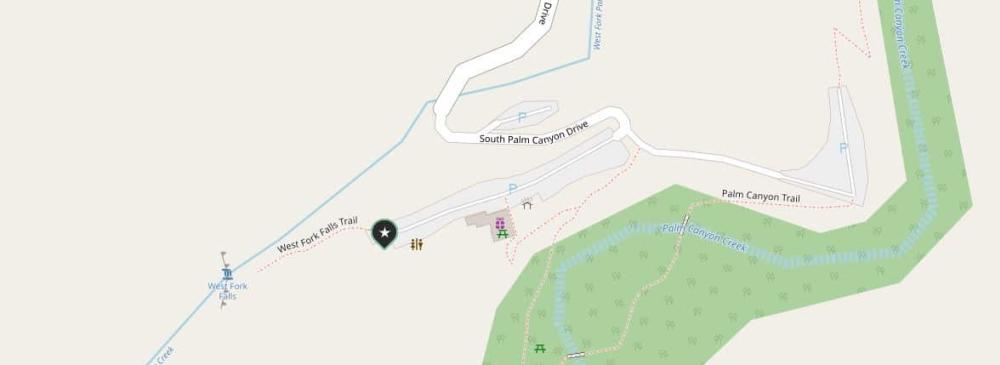
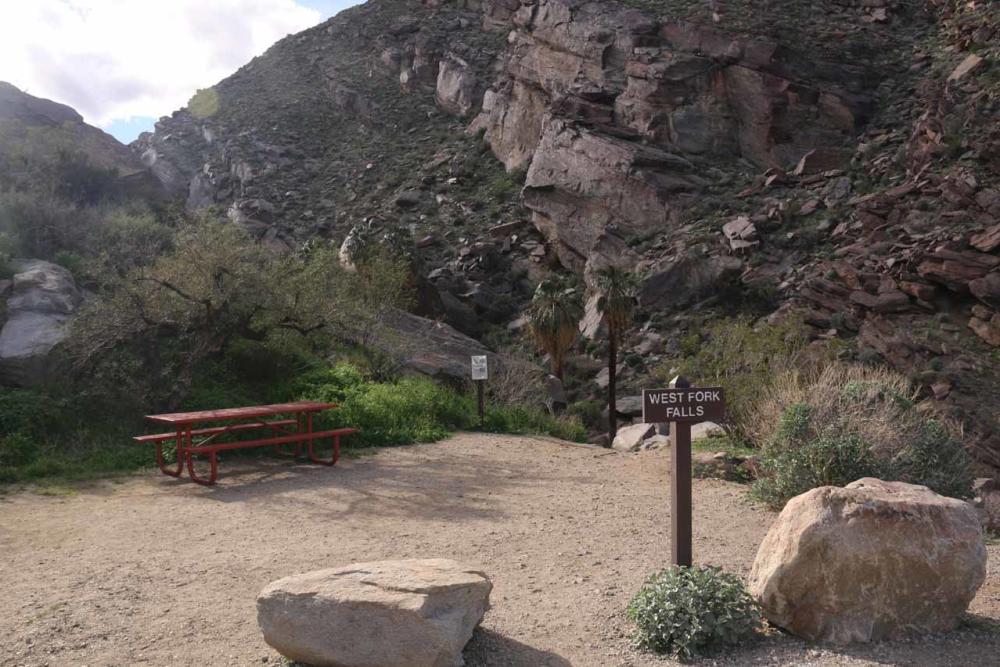

Credit: World of Waterfalls
Tahquitz Canyon – Tahquitz Canyon Fall
Tahquitz Canyon Waterfall is a stunning natural attraction and a very popular hike. This Palm Springs waterfall stands at a height of 60 feet and drops into a serene pool of water at the base. Access to the falls requires a moderate 1.8-mile (2.9 km) round-trip hike, which takes visitors through the beautiful Tahquitz Canyon and past various other geological features like rock formations, desert vegetation, and wildlife. The trail is well-maintained and provides several vantage points from which to view the waterfall and the surrounding landscape. The Tahquitz Canyon Waterfall is a popular spot for hikers, nature lovers, and photographers looking to capture the beauty of the desert oasis. Tahquitz Canyon Trail Map.
To visit this fall, enter the Tahquitz Canyon Visitor Center. They also offer educational and cultural exhibits. There is a display of artifacts, an observation deck, and a theater room for viewing The Legend of Tahquitz. 500 W Mesquite Ave.

Take the Tahquitz Canyon Loop Trail to the Tahquitz Fall. There and back, it is less than two miles away and kid-friendly. Swimming is restricted to the large pool below Tahquitz Falls. Note they are only open Friday – Sunday, July – September.
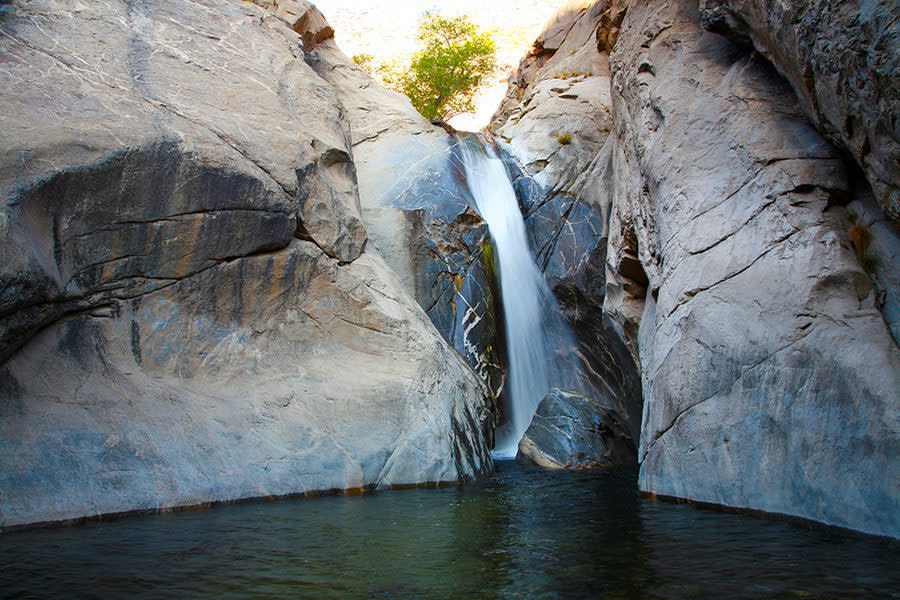
Tahquitz Canyon was also where the 1937 film Lost Horizon was filmed.
Murray Canyon – Seven Sisters Falls
Murray Canyon is located between Palm Canyon and Andreas Canyon. It is a beautiful hike with stunning views of desert landscapes, palm oases, and the San Jacinto Mountains. Along the way, hikers will pass by streams, waterfalls, and wildlife, including birds, lizards, and occasionally, bighorn sheep. The trailhead is located near the parking lot, and hikers will need to pay a fee to enter Indian Canyons. The canyons are sacred to the Cahuilla people and are home to several important historical and cultural sites, including petroglyphs, rock art, and village sites. Murray Canyon is a must-see destination for anyone visiting Palm Springs or the surrounding area. It offers a unique and unforgettable hiking experience that is sure to leave a lasting impression.
Unlike other waterfalls, this 12-foot Palm Springs waterfall (also called Murray Canyon Falls or Seven Falls) is a multi-tiered cascade that descends into Murray Canyon. It forms a stair-like feature. Access the falls on the Murray Canyon Trail, which is just under four miles in and back. The first section is flat, and then it can get a bit rocky.
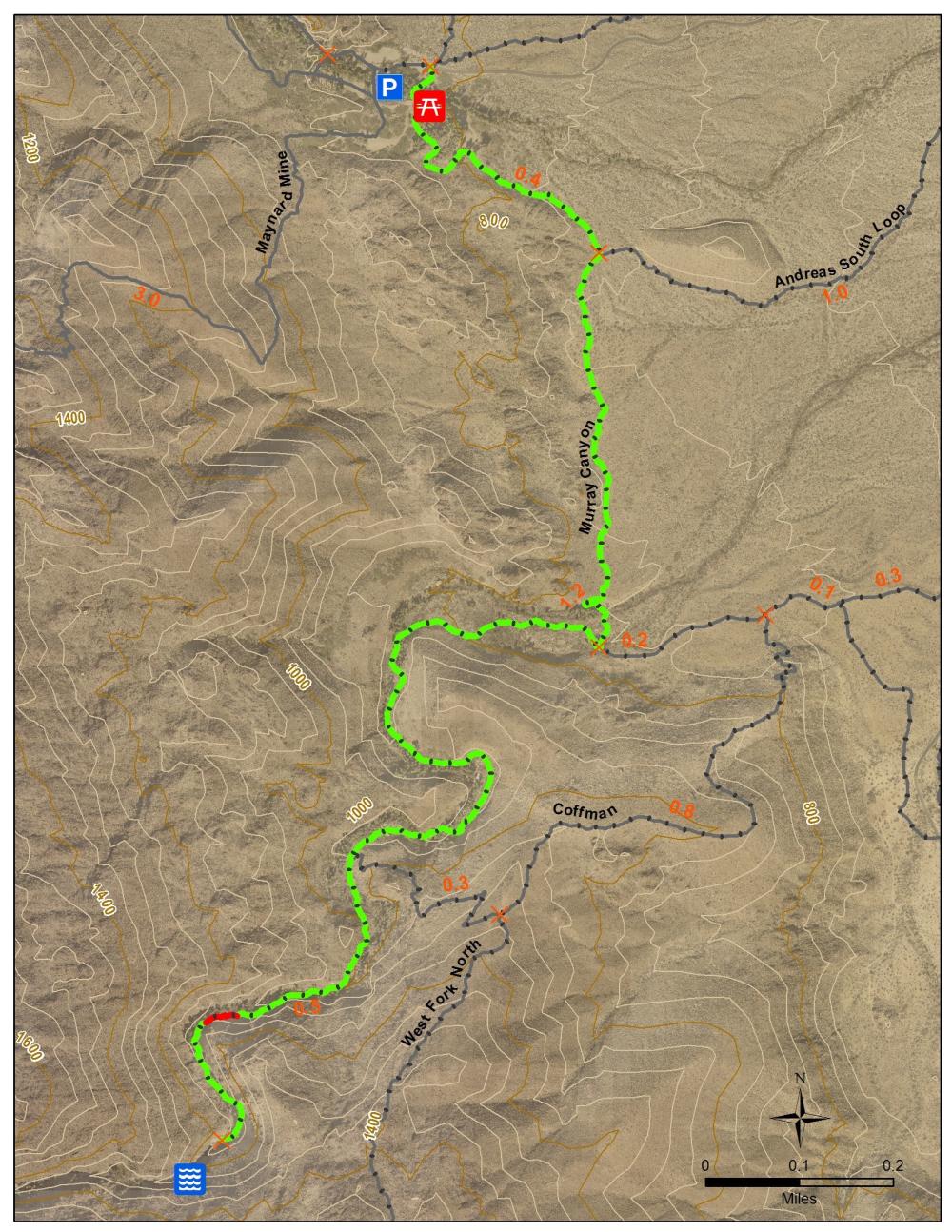
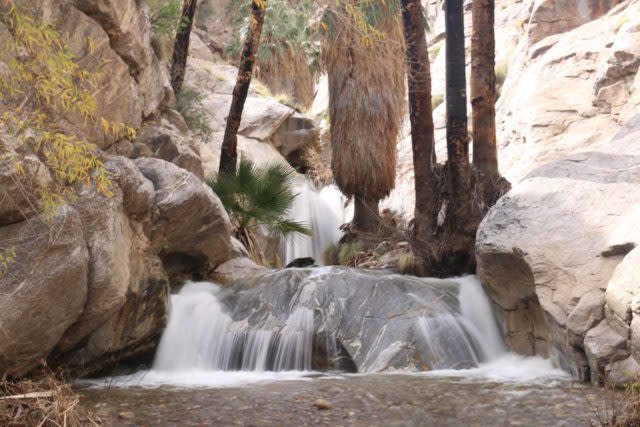
Credit: World of Waterfalls
Maintaining the Canyon Streams
The Cahuilla tribe, who are the original inhabitants of the Coachella Valley area, have been actively involved in maintaining the canyon streams in Palm Springs. They have implemented various strategies to protect and preserve the natural resources in the area, including the streams. One such strategy is the creation of the Cahuilla Tribal Conservation Corps (CTCC), which is made up of tribal members who work to restore and maintain the natural habitat of the canyon streams. The CTCC team focuses on removing non-native invasive species, restoring native vegetation, and monitoring the health of the streams.
Additionally, the Cahuilla tribe works with other organizations and government agencies to develop and implement conservation and restoration initiatives for the canyon streams. For example, they collaborate with the Desert Water Agency and the U.S. Fish and Wildlife Service to improve water quality, control erosion, and protect endangered species in the area. Overall, the Cahuilla tribe's efforts to maintain the canyon streams in Palm Springs demonstrate their commitment to preserving the natural environment and cultural heritage of their ancestral lands for future generations.
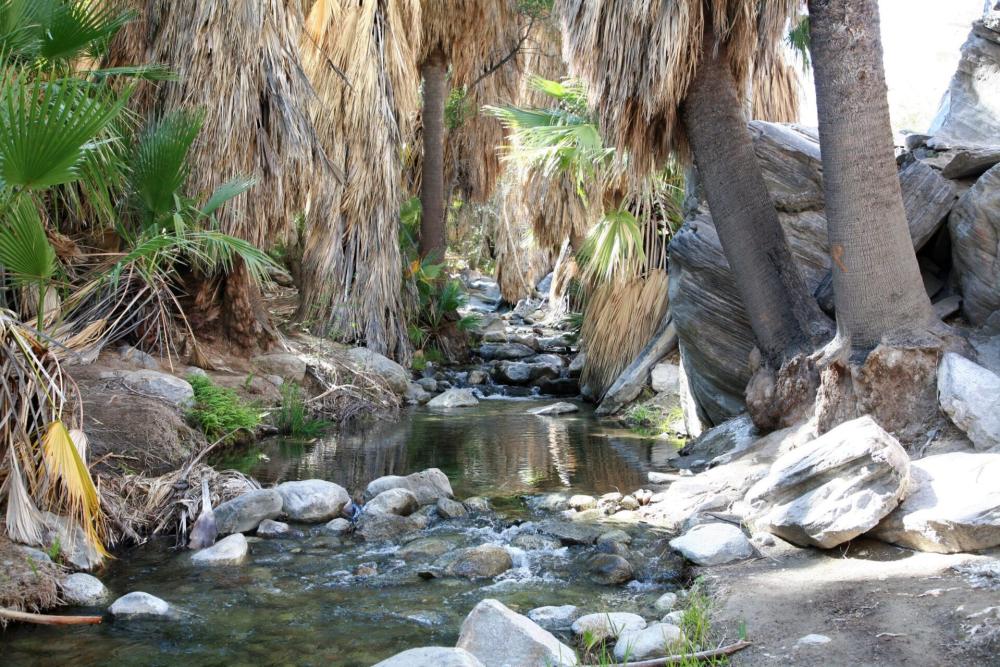
Explore Native Palm Springs
7 Hikes In Palm Canyons
Indian Canyons Ranger Led Hikes
Weekend Getaway in Palm Springs: Our Perfect Itinerary
- 5 min read
Palm Springs is the perfect backdrop for everything from romantic…
Best Golf Courses in Palm Springs
- 4 min read
Palm Springs, with its warm weather and stunning desert scenery, is a…
Your Complete Guide to Palm Springs Pool Day Passes
- 10 min read
Palm Springs Hotel Pools with Day Passes, Cabanas & Loungers…
Stargazing in Palm Springs
- 3 min read
Spend the day exploring sun-warmed trails, then stick around after…
Red Jeep Royalty: How One Family Built the Iconic Red Jeep Tours
- 5 min read
What’s a girl to do when her mom pioneers the first Jeep tour…
